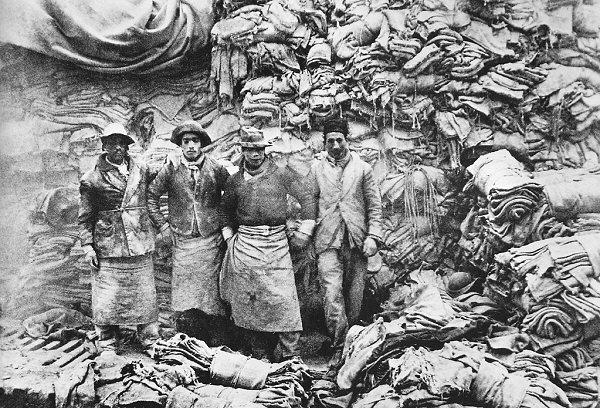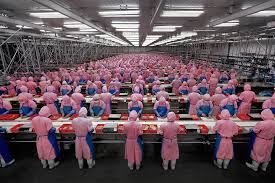 |
| Lewis Hine Power house mechanic working on steam pump, USA, 1920 |
 |
August SanderPastry Cook, Germany, 1928 8 x 10" Silver Print Posthumous Print Printed 1996 |
On the other hand, August Sander's phtography collections focused more on occupation as a self identity. He was a photographer in Germany pre and during World War II. He would go around Germany (more so before the war) to take what defines as Germany by capturing everyday lives (what they do as a job, etc.) of the citizens there. His works were not merely a depiction of a "career" per se, but tells a lot about that person in the portrait's existence, making the photographs personal and specific.
 |
| Henri Cartier-Bresson Quai de Javel (Ragpickers), Paris, 1932 Printed on 11 x 14 inch |
Works by Henri Cartier-Bresson, Quai de Javel (Rag Pickers), reminded me of the caste system in India. Like Sander's works, it depicts these men's identity in terms of their placement in the society, but at the same time, the lack of identity of the each individuals in the photo makes it touch the concept of them being a mere workers a whole. In India, people are born with their class and occupation due to their last name that is carried throughout the family from the past. Though the concept of caste system is slowly vanishing throughout the world, photographs like this makes it apparent that it has always been a big part of the societies in many countries on a global scale.
 |
| Edward Burtynsky Manufacturing #17, Deda Chicken Processing Plant, Dehui City, Jilin Province, 2005 |
Finally, the phogoraph above by Edward Burtynsky shows the workers in chicken manufacturing factory in China. With technology advancement, it is inevidable that people in factories are as machine-like as the technologies they use to do the labors. Everyone wearing the same pink clothes, doing the same gestures over and over again... They are no more human-like than the identical chickens being manufactured at the factory. Where did these workers' identity as a human being go?
The below clips is a short snippet of a classic comedy called I Love Lucy, where labor in a factory like the one shown in Burtynsky's photo is made fun of.
My favorite part about the Burtynsky photo is that the workers are wearing pink and blue and I that that serves well to represent the gender anonymity that I assume the artist is also including as part of his message.
ReplyDeleteThe relationship of the photographer to the subject can not be overlooked. For example, Sander photographed in the area around his home in the Black Forest during the Weimar period whereas Burtynsky travels all over the world, working to gain access to make his expansive "landscapes..."
ReplyDelete